Study of properties of nanomaterials. Рубрика в журнале - Nanotechnologies in Construction: A Scientific Internet-Journal
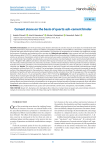
Cement stone on the basis of quartz-ash-cement binder
Статья научная
Introduction. One of the promising areas related to formation of concrete structure on the basis of a mineral binder with specified performance properties employs the addition of ultradispersed fillers (nanomodifiers) to the binder composition. Wastes of quartz and hydro-removal ash are used as nanomodifiers. The presence of nanoparticles in the binder can significantly change the processes of hydration and hardening of the concrete mix. Materials and methods. Hydro-removal ash from Omsk combined heat and power plant 5 (CHPP-5), cement and quartz waste obtained from the production of highly pure quartz concentrate which acted as an enhancer of pozzolanic activity to hydro-removal ash were used as materials for cement stone on the basis of a quartzash- cement binder. Nanomodifier was obtained as a result of mechanical, mechanohydraulic (water) and mechanohydrochemical (water + Megalit S-3ML additive) activations. Activation of the quartz-ash mixture was carried out in a continuous-action rotary mill. The mechanical method provides only mechanical activation, and the mechanohydraulic method provides mechanical, hydraulic, turbulent and acoustic activations. The mechanohydrochemical method provides all actions of hydraulic activation including chemical one. Results. The article investigated cement stone on the basis of quartz-ash-cement binder (activated quartz waste and hydraulic ash from Omsk CHPP-5, cement). The technologies of activation of the quartz-ash mixture by increasing the specific surface of the dispersed phase for the production of quartz-ash-cement binder are considered. The obtained results of the weight distribution of particles of hydro-removal ash and quartz before and after activation show that the average size of the nanoparticle diameter is from 25 μm to 1.5 μm and specific surface is 967–7729 cm2/g. Conclusions. The use of nanoparticles in a quartz-ash mixture allows increasing the strength characteristics of cement stone from 23 to 59%. The use of quartz waste from the production of high-purity quartz concentrate and ash hydraulic removal from Omsk CHPP-5 power plant with the introduction of the proposed technologies for their activation allows increasing the formation of cement stone on a quartz-ash-cement binder by increasing the package density and chemical activity of nanoparticles in the processes of phase formation of hydrate compounds, which will reduce intergranular space between non-hydrated cement grains and will improve physical and mechanical characteristics of cement stone.
Бесплатно
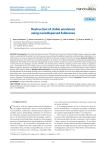
Destruction of stable emulsions using nanodispersed fullerenes
Статья научная
Introduction. This article describes the results of the destruction processes studies of stable emulsion suspension sludge systems, conducted by the authors. Destruction processes are achieved by adding nanoparticles to demulsifying compositions. Currently, there is no universal composition demulsifier that effectively destroys emulsions formed in oil sludges. Research methods. To deal with this issues, the authors have conducted research on the creation of an effective demulsifier containing nanosized particles of fullerenes. The studies were carried out with dispersed oil-slurry emulsion-suspension systems, selected from open storage ponds of enterprises of JSC «Tatoilgaz» and JSC «TAIF-NK». For the destruction of the oil-containing system of the emulsion-suspension type, a composite mixture of complex action has been developed, which includes anionic wetting agents, nonionic surfactants, flotation reagents, detergents and alkaline buffer solutions that provide the required value of a constant indicator of the acid-base balance of the aqueous medium. Results and its discussion. A composite demulsifying mixture of complex action, which increases the effectiveness of the wetting washing action of surfactants, namely, the diphilic structure of the dispersed medium changes to hydrophilic, that is, the contacts of particles having a monophilic surface with the hydrocarbon phase of the emulsion medium are broken. When particles pass into the water volume from the phase separation boundary, the layer on the surface of the emulsified water is destroyed. The dehydration time of petroleum products is reduced by almost 2 times. Conclusion. During the research, the intensification and increase of the efficiency have been successfully reached.
Бесплатно
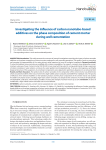
Статья научная
Introduction. This article presents the outcomes of research investigations examining the impact of carbon nanotube additives on the phase composition of cement mortars employed in well cementing operations. The quality of work on cementing and ensuring the impermeability of the casing string is quite important in terms of ecological compliance. Research methods. To solve this problem, heavy concrete was modified with a carbon nanoadditive. For research, a cement stone obtained by normalmoisture curing was chosen. Cement mortar CEM III/A32.5H was mixed with tap water for curing, preliminarily stirring a suspension of carbon nanotubes in water solution, a mixture of a water repellent and a hyperplasticizer. To ensure a homogeneous and highly dispersed structure of this suspension, its constituent components were subjected to preliminary dispersion in an ultrasonic field. Results and their discussion. The optimal ratio of carbon nanotubes in the composition of the cement mortar was determined, which amounted to 0.005% of the mass of cement for single-walled carbon nanotubes and 0.0005% for multilayer ones. The process of influence of the selected modifiers on the hydration products and the phase composition of the cement mortar was studied. An additive of complex action, including single-layer carbon nanotubes, was dispersed into solutions of a mixture of hydrophobic and hydrophilic surfactants, which made it possible to increase the strength of cement mortars up to 55%. Conclusion. In terms of modification, single-walled carbon nanotubes are the most efficient.
Бесплатно
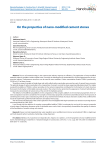
On the properties of nano-modified cement stones
Статья научная
The use of nanotechnology in the construction industry improves its efficiency. The application of nano-modified materials makes it possible to reduce capital costs. Currently the introduction of nanomaterials is of great importance for the construction industry. Carbonaceous structures can be used as nano-modifiers. Carbon nanotubular material TUBALL produced by OCSiAl.ru LLC has been chosen. To perform research samples of single-layer and multi-walled carbon nanotubes were used as a part of cement heavy concrete. The optimal dosage of carbon nanotubes in the composition of cement concrete has been experimentally determined. The studies revealed that addition of TUBALL carbon nanotubes to the cement composition contributed to the formation of a mesh structure that resists the formation of shrinkable nanoscale cracks in the cement mortar, promotes the appearance of calcium hydrosilicates, increases the concentration of calcium ions at the start of the hydration period. The influence of modified nanoadditives in the composition of the complex additive on the mechanical properties of the cement composition has been considered. The complex of mechanical properties of cement nanoreinforced stone in the process of cementing the annular space of producing wells by X-ray and thermal methods of analysis has been studied. That confirmed the results of experiments performed with electronic and optical microscopy. The microstructural elements of the cement specimen were investigated with high-resolution auto-emission scanning electron microscope Merlin by CARL ZEISS. It was found that the addition of complex nanomodified additive TUBALL accelerates the curing of the cement composite at early stage of hardening, decreases value of shrinkable nano-cracks, that in turn positively characterizes the quality of contacts at the boundaries of cement-casing, rock-cement.
Бесплатно
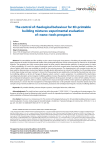
Статья научная
The extrudability and firm stability are the criteria rheological characteristics of building 3D printable mixtures. This paper presents the results of experimental studies of the rheological behaviour of fresh cement pastes as matrices for 3D printable mixtures. The squeezing test, with constant plate speed, has been used for determination plasticity of cement pastes as criteria of their extrudability. As a result, the typical rheological models of the fresh cement pastes have been identified. In addition, the value of plastic yield stress was evaluated as criteria for the extrusion process. The squeezing test, with constant strain rate, has been used for determination structural and plastic strength, plastic deformations as criteria for the ability of a 3D printable mixture to hold shape during multi-layer casting. It is shown that these properties are significantly controlled by the plasticizer and viscosity modifying additives as factors of changes of disperse system «cement + water» properties. It is established that electrolytes, nanodispersed adsorption-active inorganic modifying additives increase the plasticity of the fresh cement pastes. At the same time, the nanodispersed adsorption-active inorganic modifying additives develop plastic strength as criteria of firm stability. The introduction of inorganic polymers, inert to cement, improves the structural strength of fresh cement pastes but significantly reduces their plasticity. It is shown that the management of rheological behaviour of 3D printable mixtures should be based only by the complex using of chemical addi-tives such as electrolytes, plasticizers and nanodispersed inorganic viscosity modifying additives.
Бесплатно
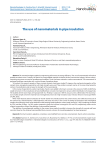
The use of nanomaterials in pipe insulation
Статья научная
The nanotechnologies applied in engineering will increase its energy efficiency. The use of nanomaterials will make it possible to reduce costs. Currently, the search for nanomodified materials is relevant for the construction industry. Various carboncontaining structures are used as nanodispersed modifiers. Taunit has been selected as carbon nanomaterial. This nanomaterial is packaged multilayer nanotubes with a conical shape of graphene layers. To conduct this research samples of foam concrete cements have been studied. To improve the mechanical properties of the cement stone, elongated nanoparticles with high strength were used. They reinforce cement mortar, at the same time being the centers of crystallization and increase the strength of the nanomaterial. In the course of experiments, carbon nanotubes «Taunit» were added to the foam concrete in the amount of 0.005–0,0005% by weight of cement. In the manufacture of nanomodified foam concrete it is important to ensure uniform distribution of nanoparticles. The studied cement stone chips were sprayed with Au / Pd alloy in a Quorum 150T ES vacuum unit in a 80/20 ratio. The microstructure of solid samples of cement material was investigated by means of a high-resolution auto-emission electron microscope Merlin of CARL ZEISS. When multi-layered carbon nanotubes of “Taunit” brand were introduced into the cement mortar, the relief microstructure of the cement was characterized by a heterogeneous and loose structure. In the course of testing the strength of the investigated samples, the following results were obtained: under bending loads applied to cement-sand mortar for 7 days, hardening increased by 35%, and after 28 days – by 30%; under compressive loads, the increase in strength is 42% and 22%, respectively, relative to the original composition without the addition of nanomodified materials. The addition of nanodispersed modifiers to the cement stone made it possible to increase the strength of concrete and foam concrete. Based on the obtained nanomodified foam concrete, a device for insulating pipelines has been proposed.
Бесплатно

